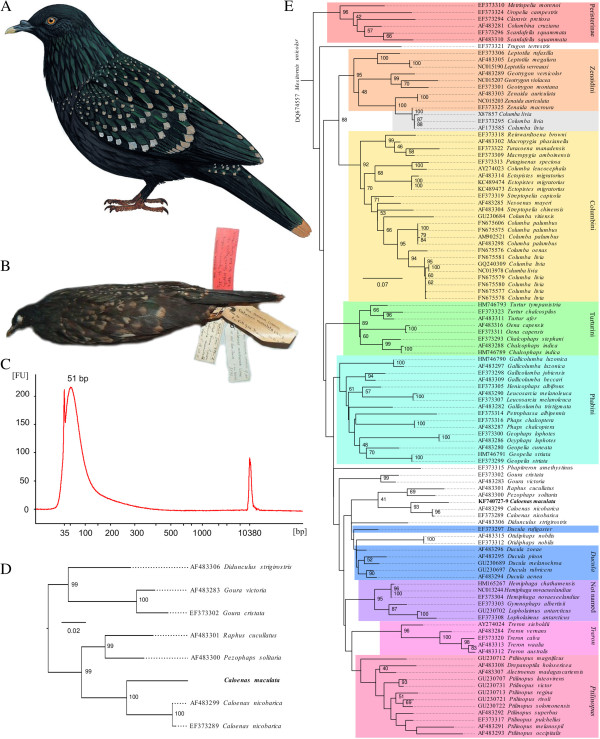Figure 1.

The Spotted Green Pigeon, extracted DNA characteristics and phylogeny. (A) Reconstruction of the Spotted Green or Liverpool Pigeon (courtesy of del Hoyo, J., Elliott, A., & Sargatal, J. eds. 2002. Handbook of the Birds of the World. Vol. 7. Jacamars to Woodpeckers. Lynx Edicions, Barcelona), (B) a picture of the sole surviving specimen (courtesy of Clemency Fisher and the World Museum, National Museums Liverpool), (C) Bioanalyzer plot for the first DNA extract highlighting the short fragmentary nature of the DNA (median 51 bp). 35 bp and 10380 bp peaks are markers. FU: fluorescent units., (D) Maximum likelihood tree for the concatenated Spotted Green Pigeon sequences and 12S sequences from members of the extended Dodo clade (as identified by Shapiro et al. [1]) and (E) Maximum likelihood tree for 106 Pigeon mitochondrial 12S sequences. The Spotted Green Pigeon (bold) clusters first with the Nicobar Pigeon and second with the Dodo and Rodrigues Solitaire. Previously identified Pigeon clades in the phylogeny are coloured. The reason for the clustering of three rock Pigeon sequences (Columba livia, grey box) with mourning doves (Zenaida macroura) is unclear, although hybridisation has been observed for these two species [5]. Bootstrap support values above 40 are indicated in the larger tree to allow for observation of the bootstrap value for the split between Caloenas and Raphinae, the dotted lines in both trees are there to associate the taxa with the appropriate tree tips.
